03 Oct 2016 - {{hitsCtrl.values.hits}}
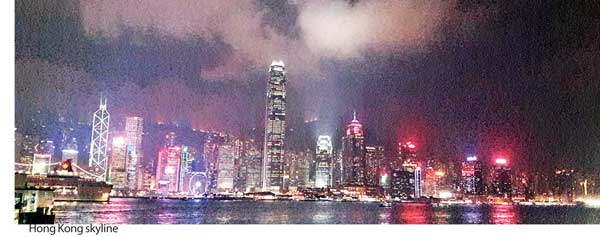
By Chamindra Wickramasinghe
Synonymous with Hong Kong is a skyline vista imprinted on mind – veiled by a thin haze in the light of day and a galaxy of lights after sunset – ever since strolling on that iconic promenade to view the Hong Kong Island cityscape, hosted by Cathay Pacific and Hotel Cordis, Hong Kong, as part of a FAM tour of the city.
Such city grandeur Hong Kong is renowned for, was viewed on a mild misty evening to rain, from Hong Kong’s symbolic centre – the Tsim Sha Tsui (TST) waterfront, bordering the tip of the Kawloon peninsula, overlooking Hong Kong Island, across the rippling waters of the natural landform harbour.
In Hong Kong, a shopping paradise, hidden behind the overwhelming trendy exterior however were equally fascinating conventions, explored travelling into the urban interiors of the two lands the harbour waters separated.
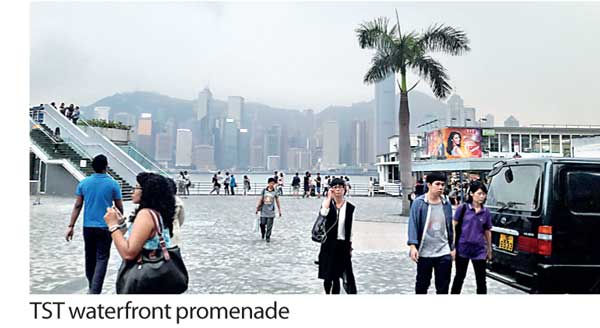
TST- Giant world bazaar
Availing Cordis’ direct underground access to the Mongkok mass transit railway station, it was a short journey to TST, adding two novel experiences – Hong Kong public transport system, acclaimed as one of the world’s safest, most efficient and frequent, and utilising Octopus Card, a smart card and the most widely used electronic cash system in Hong Kong.
The way leading to the TST waterfront was an elegant shop-lined street, a fraction of what TST really is as to the description the itinerary gave: “TST is more than a mere district but a giant world bazaar, where Hong Kong’s glittering harbour is met by an alternate sea of stalls, markets, shops and malls.” Tailors, jewellers, perfumeries, all international brand name stores and luxury designer goods: Hermes, Gucci, Chanel, Dior, being just a few – posh shops, massive ones, some of them flagship stores, lined the street; a mere look at them was inspiring.
Right there in the Victoria Harbour waterfront was a ‘shopping kingdom’ – Harbour City – the largest shopping mall in Hong Kong, housing it is said over 50 restaurants and more than 450 stores, offering luxury shopping, even housing Louis Vuitton’s largest Asian store.
Among hundreds of rarest moments in Hong Kong, the hosts made possible tasting a top, one of the most expensive desserts in the world – the macroons of world famous French boutique Pierre Hermé Paris, at the Harbour City outlet.
Vast cityscape
Hong Kong, meaning ‘fragrant harbour’ in the Cantonese dialect, a Chinese spoken form in Hong Kong, the surrounding uniting TST and the Victoria Harbour that has connected Hong Kong to the world for over a century and a half, had a distinct character.
Cruising the waters around the Victoria Harbour on board Aqua Luna, the traditional red-sailed Chinese junk boat, the vast cityscape could be complimented in daylight – on either side TST of Kowloon and most panoramic Hong Kong Island with a definite business-buildings appearance. Amid clusters of high-rises, world-renowned brands were displaying their claims to buildings: the landmark AIA office building, Samsung, Hitachi and Panasonic and the tallest and most outstanding International Finance Centre (IFC) tower, on the island’s waterfront.
Now in retrospect, it is admitted there’s truth in the saying no trip to Hong Kong is complete without strolling along the TST waterfront promenade, where the Hong Kong Island skyline is best visible and that too at night; it is a glorious sight when the illuminated mighty skyscrapers of the Hong Kong metropolis dazzle at night.
Kawloon- Market clusters
Cordis’ hometown Mongkok of the Kawlooon peninsula, being the most congested residential and shopping district in the city, the neighbourhood had abundant shopping streets and clusters of merchants that Cordis-organised complimentary Mongkok walking tours allowing experience the local Hong Kong life and street marketing for bargain clothing and accessories.
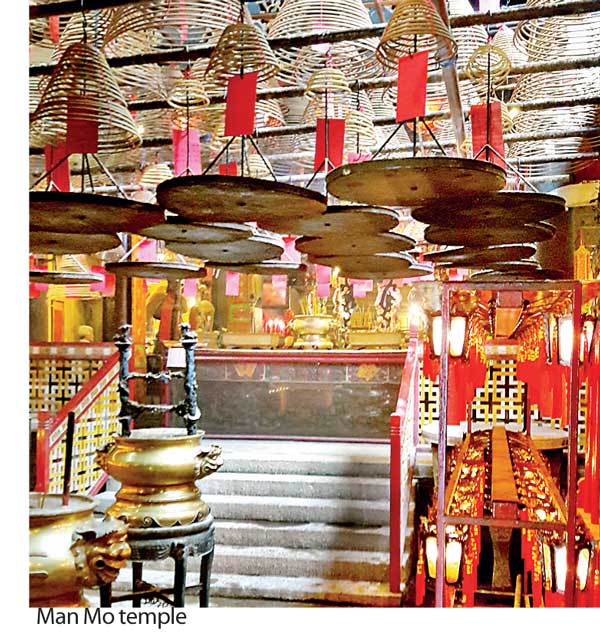
A famous bazaar and a great place to shop was ‘Ladies Market’ with a history attached to it tracing back to the times Mongkok was a village. The grounds it now is had market gardens until they were cleared for development in early 1920s and during the international oil crisis in early 1970s; it was the space unemployed workers had set up street stalls, leading to trade in inexpensive but fashionable wearables for ladies – thus, derived its name.
Besides the Bird Garden selling birds and bird breeding supplies and live fish market largely selling goldfish – an auspicious addition to a Hong Kong home that can bring good luck, fresh produce markets sold some of the most uncommon vegetables and fruits unique to Hong Kong.
Dozens of shops and wholesalers sold flowers in the open-air Flower Market – a captivating place for flower-lovers – to see and buy auspicious flowers, luck-bringing houseplants, fresh-cut tulips to roses and orchids, known and unknown varieties in singles, bunches, bouquets and arrangements.
Quintessential Hong Kong
For a mug of quintessential Hong Kong afternoon tea served with ice, in Mongkok the stop was at a ‘Cha Chaan Teng’, literally meaning ‘tea restaurant’, known for serving affordable menus, including Hong Kong cuisine and Hong Kong-style Western cuisine.
A walk at night in the neon-sign lit streets was a greater experience viewing hundreds of neon boards, jutting out street after street.
A link bridge connected Cordis directly to the biggest mall in Mongkok and a Hong Kong shopping hot spot – Langham Place Mall – for more high-end shopping at over 200 stores of local and world-renowned brands – from H&M, Bodyshop to Zara – and restaurants.
Central- Traditions in city
Branded as ‘Asia’s World City’, Hong Kong promises ‘every moment a different world’ there – an energetic city where contrasts coexist.
From Cordis, using the Western Harbour Crossing, a less travelled but more expensive undersea tunnel linking Kawloon and Hong Kong Island, a faster entrance was made to Central, the central business district of Hong Kong, on Hong Kong Island, a frenetic locale where the most extremes – the most modern and the oldest – harmonised.
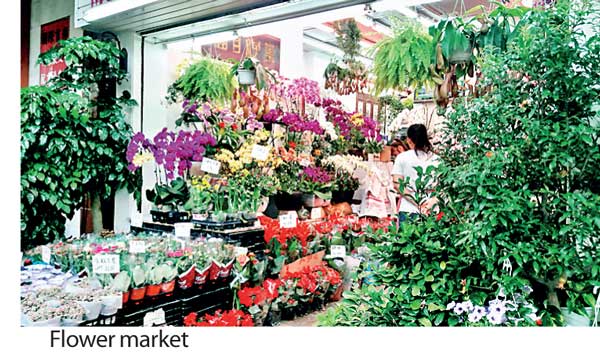
It was while on a walk in Hong Kong tour of the streets of Central, an unmissable part of a trip to the city, signs of colonialism, deep-rooted ancient Chinese culture and quaint trades found hidden behind the mighty skyscrapers.
Amid Central’s grand and massive towers were structures depicting colonial architecture reflecting the British presence in the land for over one and a half centuries. However, more striking was even older beliefs mingling with progressive modern-day operations in the territory. Sharing a northern border with China, its influence on culture in Hong Kong appeared foremost.
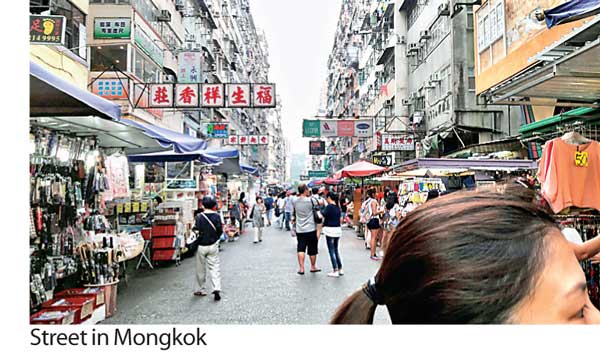
For instance, the commissioning of the two bronze lions in front of the HSBC headquarters in this world top financial centre was following the principles of feng shui, the ancient Chinese practice of positioning objects and buildings in harmony with nature, to bring good fortune. Simply, the escalators to the HSBC bank floor were placed in angle, accordingly. The bank buildings, including Bank of China and Standard Chartered Bank, adjacent to HSBC, faced the sea for the same belief.
Simple trades and lives
In Central, a branded shopping paradise for cosmopolitans with massive fashion boutiques and luxury goods, an age-old tram ride to the narrow streets in Sheung Wan, a historic but trendsetting neighbourhood, showed behind colossal buildings local people doing traditional and simple trades – running traditional medicine shops, selling traditional Chinese soy sauce and local fruit and vegetable kinds and serving local food at wayside eateries.
At the Man Mo temple, a tribute to the Gods of Literature (Man) and War (Mo), who were worshipped by ambitious students looking to succeed in the civil examinations of Imperial China, offerings are still made with spring onions and salary leaves, seeking blessings for examinations.
In Central, among street after street of antique shops and art galleries, coffin-makers to beer stores are pawn shops that flourished in Hong Kong in the yesteryear, before Hong Kong’s economy flourished, where even to date people could exchange not merely valuable gold, but even a mobile phone or a shirt for quick cash.
To refresh a traveller thus walking the streets of Hong Kong seeing the lesser seen sides of the city, Central houses chic eateries like Aberdeen Street Social, serving modern British cuisine, bar bites, desserts and drinks.
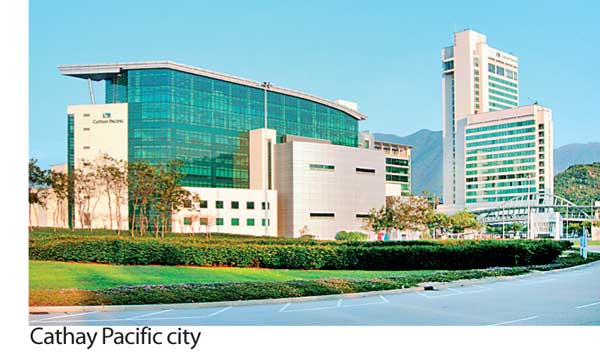
Cathay City: City within a city
A visit was made to sprawling Cathay City – the brushwing livery airline Cathay Pacific’s global headquarters, the heart of the airline’s Hong Kong operations, in offering passenger and cargo services to nearly 200 destinations in Asia, North America, Australia, Europe and Africa.
Along with its visible stature, the numbers recorded associating it marked Cathay City a remarkable place: spreading over four hectares of land reclaimed at Hong Kong International Airport, its office towers themselves house over 30 departments and 3,000 employees.
It is indeed a city with a 23-storey staff hotel, retail stores, a food court and a leisure centre, all designed offering convenience and comfort to its Hong Kong-based and visiting
overseas employees.
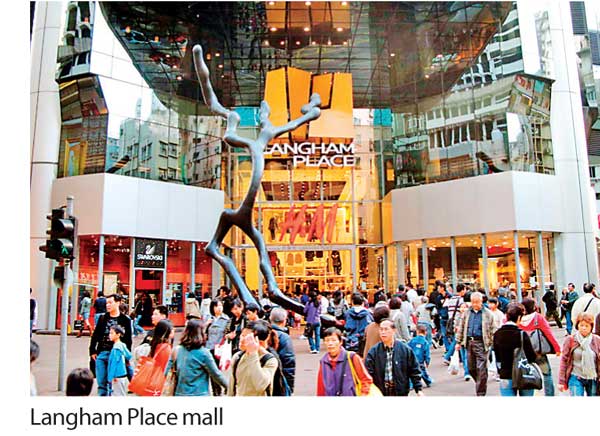
The officials at Cathay City spoke of the facilitation of the flight training centre and safety training school in its premise maintaining the airline’s crew’s standards.
In the lively place, supposed to be one of the largest corporate head office facilities in Asia, it was notable smart pilots attending to pre-flight duties and attractive uniformed stewardesses getting briefed by their bosses, just before transferred from there to the Departures.
10 Jan 2025 14 minute ago
10 Jan 2025 1 hours ago
10 Jan 2025 3 hours ago
10 Jan 2025 3 hours ago
10 Jan 2025 4 hours ago